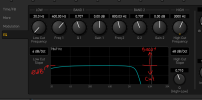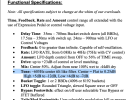A great example of such analog delay would be the Asheville Music Tool’s ADG-1. When the tone control is turned higher, the repeats gets brighter and brighter as the filter is applied on them repeatedly, also when the tone is turned down the repeats gets successively darker melting into a dark cloud…
It’d be awesome to be able to achieve/support such sounds in Fractal’s analog delay models.
It’d be awesome to be able to achieve/support such sounds in Fractal’s analog delay models.




